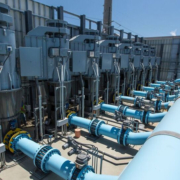Progress on Critical Water Issues
When I started my term as board chair of the San Diego County Water Authority in October 2016, California was mired in drought but the San Diego region had sufficient supplies regardless of the weather.
Thankfully, just a few months later, epic rain and snow significantly improved water supply conditions statewide, but not before validating our long-term strategy to develop a drought-resilient portfolio of water resources that protect the region during dry times. In fact, we had enough water to store 100,000 acre-feet of water for the future – a testament to regional foresight, coordination, hard work and investments by ratepayers.
Being able to assure residents and businesses that we had sufficient supplies to sustain our economy and quality of life was the biggest accomplishment of my two-year term as chair, which came to an end on September 30.
Several other highlights come to mind:
- We marked the first and second anniversaries of the Claude “Bud” Lewis Carlsbad Desalination Plant, the nation’s largest seawater desalination plant. During the most recent drought, the plant helped the San Diego region pass the state’s stringent water supply stress test, and in 2017 it was named the Membrane Facility of the Year by the American Membrane Technology Association and the American Water Works Association.
- Also in 2017, the water authority was recognized by the nation’s largest statewide coalition of water agencies for innovation and excellence in water resources management with its addition of supplies from the Carlsbad Desalination Project. The 2017 Clair A. Hill Water Agency Award for Excellence was presented at the Association of California Water Agencies’ Spring Conference in Monterey.
- Our $1.5 billion Emergency & Carryover Storage Project, built to protect the region from droughts and catastrophic disruptions to imported water supplies, was awarded the engineering industry’s most prestigious global honor in 2017 – the Outstanding Civil Engineering Achievement Award from the American Society of Civil Engineers.



